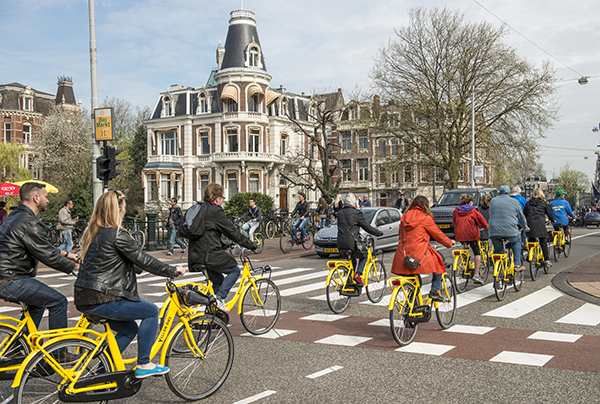Amsterdam is often called the Venice of the North, and nowadays the city is becoming even more like its Italian namesake. Like Venice, Amsterdam is listed as an UNESCO World Heritage Site, has breath-taking canals and spectacular architecture, and features world-class museums with Rembrandts and Van Goghs. However, its beauty and popularity as a tourist destination come with a downside. Amsterdam’s historic city center, including its Red Light district, faces being turned into an amusement park with hordes of drunken tourists urinating in doorways and scattering litter on its streets and picturesque canals. To prevent further degeneration for the residents of these neighborhoods, Amsterdam’s town council proposes draconian measures.
Before Covid, in 2019, Amsterdam saw than 22 million tourists per year, a significant rise in number considering the city only had 5 million visitors in 2010. For a city of 905,000 inhabitants, that is a lot, and amounts to 24 tourists for every resident. With a return to pre-Covid normal, officials expect hordes of tourists, and primarily to the districts in Amsterdam’s center. Many local residents feel unsafe with the large numbers of visitors, especially the sex workers in the Red Light district, where flocks of drunken and/or stoned tourists disturb the peace.
Turnstiles
Amsterdam’s major, Femke Halsema, and town council aim to implement a strict policy to make areas that are frequented by tourists more inhabitable, especially for the districts that receive the lion’s share of tourists, such as the historic city center and Red Light district. One innovation is introducing turnstiles for specific districts to limit the numbers of tourists. Of course, Halsema would rather not have to take such measures, but other cities across Europe, including Venice, are also introducing turnstiles to restrict and deter excessive numbers of visitors from entering specific districts all at the same time. Amsterdam’s policy also includes limiting the space allotted to outdoor cafés and restaurants, prohibiting the sale of alcohol from Thursday until Sunday after 4pm in some districts, and implementing a crowd-control policy in the Red Light district with one-way pedestrian traffic in certain alleys and small streets. Moreover, the city council has already decreased the number of permits for tourist-aimed shops and banned new hotels from busy touristic areas.
Fewer coffeeshops
The town council also proposes reducing the number of coffeeshops and implementing the sale of cannabis to only Dutch citizens, using an electronic system called i-criterium. This will reduce the overall number of coffeeshops, as tourists can no longer visit them. However, according to an I&O Research report, 24% of tourists will still visit the city and hope to purchase cannabis either illegally or ask a local to buy it for them.
The BCD, the Dutch Union of Cannabis Retailers, fervently opposes the mayor’s proposed regulation. They argue their clients do not disturb the peace, since most cannabis smokers become starry-eyed and quiet. A new study into tourist behaviour concludes that more regulation of visitors to coffeeshops will not reduce the number of tourists or reduce the amount of noise in the city’s center either. The same study indicates that many of the residents of Amsterdam believe that the consumption of alcohol causes more disturbance of the peace than the use of cannabis; it argues that a ban on alcohol in some areas of the city would be more effective. However, for the municipality, banning alcohol consumption is more difficult to regulate.
Whatever the mayor and town council propose to curb the city from turning into an amusement park, it will not be popular among tourists or the many business owners who profit from tourists. Annually, tourists pump 8 billion euros in Amsterdam’s economy. It’s not easy being a beautiful city.
Written by Benjamin B. Roberts
